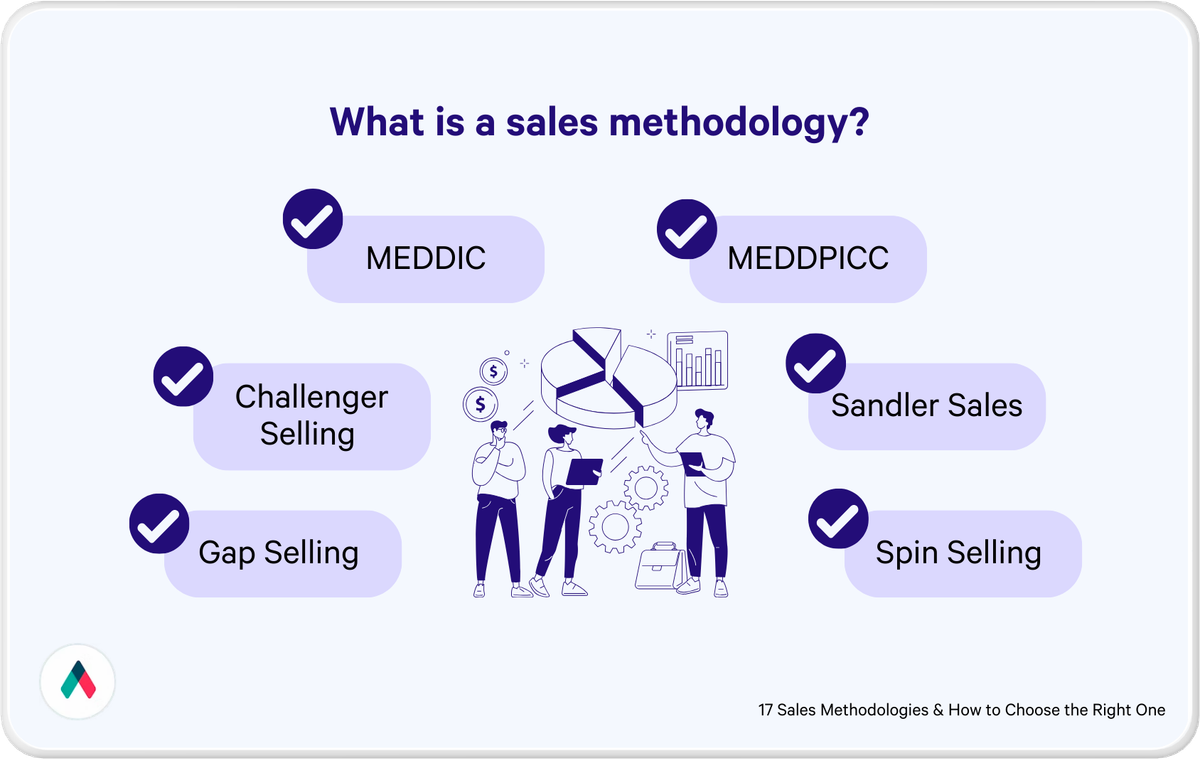As a b2b sales professional, you might be relieved not to rely on outdated selling methods, like going door to door or doing a live presentation in an old hotel ballroom. Now that we’ve experienced COVID-19 restrictions, and the increasing costs of travel over the past few years - virtual selling has become more of the norm. Using webinars and other virtual technology, you can easily connect with customers and buying teams anywhere in the world without leaving your home or office.
What is a sales webinar?
For the uninitiated, webinars (web seminars) are video workshops or lectures that allow brands and companies to share knowledge, new ideas, and updates in a more approachable way.
They’re also used to build and nurture relationships and credibility and broaden audience bases. You can create a tailored sales webinar for specific customers or prospects to help advance deals. Webinars have become a useful tool for generating leads and engaging in conversations — especially now that remote work (at least in some capacity) remains the norm.
Creating a personalized sales webinar experience can seem a bit daunting if you’ve never put one together before. If you’re a first-timer and feeling overwhelmed, here are some tips that might help break down the task into more manageable pieces.
What are the benefits of using a sales webinar?
Webinars are a great way to connect with a distributed buying team, share information, and create alignment. While a generic webinar may help you with your marketing efforts or earlier in the sales funnel, you can also create personalized webinars for specific companies and buying groups. These customized and targeted sessions can be helpful in complex sales and account-based marketing (ABM).
To get the most bang for your buck (and increase productivity) regarding webinars and the content you’ll need to support them, let’s look at some benefits in detail and how to leverage them best.
Present to a distributed buying group without travelling
We all know that when it comes to complex deals, there is generally a large number of people involved. Research from Gartner found that the average deal has at least seven stakeholders involved. Coordinating all of these people for a sales presentation can be a challenge, especially if they’re working remotely or distributed across different geographies. Leveraging the technology available to create a live webinar that you also record will ensure you have the right people in the room. The recording will help to memorialize the conversation and share it with any stakeholders who need to miss the meeting so they can watch the replay on demand.
Answer key questions to move a deal forward
Having everyone together for a webinar can also be a powerful sales strategy to help keep the deal moving forward. It’s important that you don’t plan so much content that you spend the entire time talking at your prospects. You want to pause at key points to allow for a Q&A session. Depending on where your potential customers are in their buyer’s journey, they will have questions, and how you respond can impact whether or not the deal is going to close.
The questions they ask, and how you answer can help you understand how to best move the deal forward or determine if it’s best to walk away. The information you get from these conversations and having the whole buying team together can also help with sales negotiations, when you get to that stage in the process.
Overcome sales objections
Another benefit of leveraging sales webinars is that it gives you an opportunity to overcome objections. While this may involve coming up with responses on the fly, after you’ve done a few of these webinars, you’ll know what the most common objections are and have the know-how to give answers that help you overcome them.
This might involve bringing up some visuals and presenting a case study or testimonial from another customer in the same type of business or industry. Try to take note of objections you come across either during these live events or other sales conversations so you and your team can build a library of techniques to use to overcome objections as they are shared.
How to build an effective sales webinar
Creating an effective webinar for your product or service doesn’t have to be complicated or overwhelming. With a few simple, repeatable steps, you’ll be using webinars frequently to help boost sales.
Define your target audience and their needs
When planning for your webinars, think first about your target audiences and what they might want or need. As we’ve already highlighted, you will need to plan sales content for multiple stakeholders and tailor your message to each group you’re presenting to. For example, if you’re selling a SaaS product that finance managers use, you want to ensure you’re addressing the needs of the manager on the call as well as the needs of the CFO and the procurement manager.
When planning webinar content, ask yourself:
- What challenges are my audience members and their organization currently facing?
- Who is going to attend the webinar and what are their roles and goals? Will anyone be absent from the buying team and be listening to the webinar at another time?
- Are there any common pain points across the industry that impact this customer?
- What else is this audience reading or listening to?
- What questions or pain points might they bring up?
- Think through objections they might have. What can you prepare in advance to overcome them?
The answers to these questions can help you to narrow down the topics or case studies that will resonate with the audiences you’re designing content for.
Set some clear objectives for your webinar
Depending on where your customer is in the sales cycle will help you determine what to bring to the webinar to ensure your success. Is this customer just coming in from some outreach or a lead generation campaign and just starting to consider your solution, but they have some initial questions? Or, have you already sent a proposal, and they want to share feedback and make some adjustments? Your prospect could also be somewhere in between these two scenarios, and the information you present (and the questions you need answered) may help you craft your proposal and initial offer.
Before you dive into creating the content, you will want to have your topic and goals solidified. This will not only help you articulate why your audience should want to attend the webinar, but it will make it that much easier to get the results you need from the call.
When setting these objectives, you should also consider how long your webinar will need to be (30-60 minutes total is long enough) and what platform you’ll use to deliver the content. Can you present through Microsoft Teams or Zoom, or do you need another webinar platform with more robust interactive features?
Create high-quality content
This one may seem a little obvious, but it’s important to create content that your audience will care about, and that will have your buying team excited about working with you. How can you paint a picture of how your solution will help your customers save time or money or work smarter? Your content should illustrate how life will be better for this customer when working with you.
You can achieve these results through case studies, demonstrations, and by using an ROI calculator to show how and when your customer will see a return on their investment. You’ll want at least a few slides with compelling and professional visuals to impress your attendees, but you don’t need to go overboard.
As the sales rep, you don’t have to do the webinar on your own. Consider bringing colleagues like customer success and operations professionals to talk about implementation and onboarding and for really large, strategic deals, consider adding senior leaders from your organization to show your prospect that their business matters to the entire organization.
Time your sales pitch perfectly
Since you already know that the sales webinar shouldn’t be an hour-long infomercial for your product or service, you need to decide when (or if) you will make a sales pitch. If your attendees are really early in their buyer’s journey, consider avoiding the pitch entirely and focusing on getting enough information from the call to craft a solid offer or proposal for the team.
If your webinar falls later in the sales process when your prospect already has great brand awareness and a solid understanding of what you have to offer, consider asking for the business more directly. This could come in the form of walking the team through the deal and associated costs or straight up telling everyone on the call that you want their business.
End with one clear call to action
Even after the webinar ends, it’s essential to keep your audience engaged to get the most value from having conducted the session. Let attendees know precisely what you want them to do and give them the tools to access downloads or info you want them to have easily.
It’s also a good idea to send a follow-up email immediately after the session or the next day. This email should recap the conversation and any action items. If you have a mutual action plan with this client, add the call recording and any follow-up documents to wherever you’re keeping your plan.
Asking attendees to take action after participating in your webinar can help you gauge their interest and priority with regard to moving forward with you. If your attendees jump into action, it’s a great sign that they’re motivated to get the deal closed. Suppose you need to send multiple follow-up messages and reminders. It’s a good sign that you’re falling lower on their priority list. If you’re not getting the response you want or it’s taking longer than expected, consider using some of the automation features in your CRM to send periodic reminders, additional information or to just generally keep in touch.
FAQs
Do webinars work for sales?
Yes, a large number of B2B marketers consider sales webinars to be an effective strategy. When done well, as many as 40% of webinar attendees may convert into potential customers. Webinars are also helpful when travel isn’t possible and sales reps want additional face time with prospects and clients.
How do you plan a sales webinar?
When planning a sales webinar, consider the needs of your potential customers. Are there common pain points or industry trends you can discuss? You want to avoid making your webinar a straight commercial or sales pitch and work to add value for your audience. You should talk about your product or service somewhere during the webinar and end with a clear call to action (cta).
What is the main purpose of a sales webinar?
The main purpose of a sales webinar is to connect with potential customers to share information. This can help you and the rest of the sales team coordinate with a distributed buying team across the buyer’s journey and share information, answer questions, and overcome objections. The webinar topic can also help drive the purpose and goals for hosting a sales webinar.
Executing great sales webinars
Planning effective sales webinars can seem like a monumental task, and in some ways, it is. This type of content planning is much more specific than general content marketing and creating general sales or marketing content. As we’ve laid out, these are different from the type of webinars your organization might do as part of the marketing strategy and are designed in a targeted way to move deals forward.
If you’ve never conducted a sales webinar before, leverage the experience of your sales leader or others on the sales team. You can ask them what worked well and if there is anything they’ve learned from past experiences that you can put into action when running yours.
Remember to create a timeline and plan to ensure you have enough time to get your content pulled together and review it with any necessary colleagues. If you’re discussing or presenting pricing information, this might mean a chat with finance prior to your webinar.
If you need to design follow-up resources to help support your webinar content and make you look like a pro, try creating a proposal template in Qwilr. The interactive high-quality visuals will impress prospects and clients alike. Need help getting started? Sign up for a demo, and one of our pros will walk you through everything you need to know.
A final note
Planning your first webinar can seem like a monumental task, and in some ways, it is. As with any first, it might not turn out the way you expected— but it may also exceed your expectations. By utilizing your team’s strengths, creating an interactive experience and having these five tips in your arsenal, every attempt will get smoother.
Remember, if you find yourself in a sinking hole just take a deep breath and repeat the mantra: when in doubt, list it out. Each task you check off as “complete” is a tiny victory that can propel you toward a great finish. So, try not to worry, stay focused, and you’ll be on your way toward a great first sales webinar.
About the author

Marissa Taffer|Founder & President of M. Taffer Consulting
Marissa Taffer is the Founder & President of M. Taffer Consulting. She brings over 15 years of sales and marketing experience across various industries to a broad range of clients.







